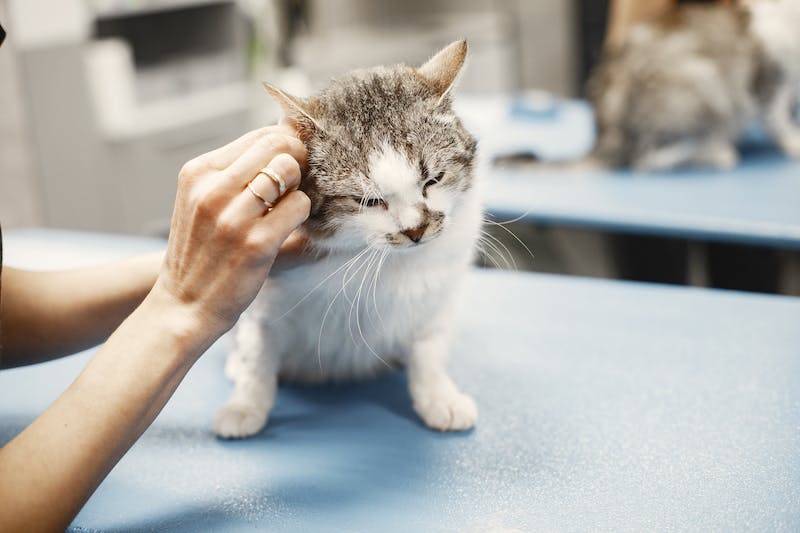How Much Do Vet Techs Make?
If you love animals and have a natural affinity for caring for others, a vet tech career could be the perfect fit. These professionals assist veterinarians by performing routine tasks, monitoring patients and ensuring an efficient workflow. Becoming a vet tech requires formal training, but there are several different paths to becoming one.
Potential job candidates should understand the different types of positions available as well as the educational requirements in order to make an informed decision on how to proceed. An animal technician performs technical duties that support veterinarians and their staff by helping monitor patient health and manage operational procedures such as sterilization and disease prevention.
The average annual wage for all animal care specialists was $35,560 in 2016, according to the U.S Bureau of Labor Statistics (BLS). Here’s everything you need to know about becoming a vet tech and what it pays:

How to Become a Vet Tech
There are several approaches to entering the field of veterinary medicine. You can enroll in a veterinary technology school to learn the skills needed to assist veterinarians in caring for animals and diagnosing their ailments. Some programs are online and others are on-campus. Vet tech programs usually include hands-on training and internships in veterinary clinics.
Another option for aspiring veterinarians is to major in animal science. Veterinary science programs focus on biology and include coursework in animal health and disease, genetics, biology, and physiology. However, this degree is not specifically designed to help students prepare for a career as a vet tech. Those looking for more general experience can consider working as a veterinary technician.
Although this position does not require a degree, aspiring vet techs might still benefit from enrolling in a vet tech program. This will provide you with an introduction to the field and allow you to develop the necessary skills needed to succeed as a vet tech. You can also gain experience as a veterinary technician while attending school.
What Does a Vet Tech Do?
Veterinary technicians assist veterinarians and their staff in caring for animals during clinical exams, surgeries and long-term treatments. They also perform administrative tasks, such as scheduling appointments, sterilizing equipment and organizing medical records.
During veterinary exams, vet techs must follow strict sanitization procedures and be knowledgeable about animal biology to assist veterinarians with examining patients and administering vaccines.
Vet techs must also be able to monitor and record vital signs, such as heart rate and breathing, to ensure patient safety. Additionally, they might assist veterinarians with surgical procedures, such as inserting intravenous lines and administering anesthesia.
3 Steps to Becoming a Vet Tech
The path to becoming a vet tech typically begins by enrolling in a vet tech program at a community college or technical school. Vet tech programs are usually one year long and include coursework in animal anatomy, biology, veterinary medicine, digital imaging and medical terminology. Students also complete a hands-on practicum and might also be required to complete a certain number of credits in general education courses, such as English and math.
Graduates of vet tech programs are qualified to take the Veterinary Technician National Examination (VTNE). The VTNE is a standardized exam endorsed by the American Veterinary Medical Association that assesses the knowledge and competency of vet techs seeking employment.
After earning a vet tech certification, those interested in working in private practice might consider becoming a Certified Veterinary Technologist (CVT). This designation is awarded by the American Veterinary Medical Association (AVMA) and is based on an extensive review of education, experience and expertise.
2 Year Associates Degree Program
Students pursuing a two-year associate’s degree in veterinary technology typically spend one year taking coursework and another year in an externship, or hands-on practicum, at a veterinary clinic. Associate’s degree programs are designed for students who don’t want to commit to the longer coursework of a bachelor’s degree program.
However, this option is not available at every school and, as an associate degree, does not qualify graduates to take the VTNE, which is a requirement for most veterinary technician positions. However, some employers are more flexible when it comes to hiring applicants with an associate’s degree, particularly those who have years of experience.
1 Year Certificate Program
Unlike associate’s degree programs, which require two years of full-time study, certificate programs in veterinary technology are often completed in one year of full-time study. Certificate programs are a great option for veterans and other professionals with previous experience who are looking to change careers and enter the field of veterinary medicine.
Another plus is that certificate programs are offered at many different schools and are sometimes available online, which can make them accessible to students who have families or full-time jobs. There are also accelerated programs available for those who want to complete a certificate program in less than a year.
6 Month Vocational Program
For students who are looking for a quick way to transition into the field of veterinary medicine, a six-month vocational program might be the way to go. These programs, which are designed for individuals without any prior experience, provide students with an introduction to veterinary medicine and the skills they need to succeed in the field.
Unlike associate’s and certificate programs, veterans are not eligible for vocational programs because they require full-time study. However, they can be great options for students who have families or full-time jobs and don’t have the time or flexibility to commit to a longer program. Because they are short, many of these programs are offered online.
Conclusion
Veterinary technicians play an important role in keeping animals healthy and happy. They assist veterinarians with examinations and surgeries and also perform administrative tasks, such as sterilizing equipment and scheduling appointments. Vet techs must be knowledgeable about animal anatomy and be skilled at following strict sanitization procedures. Becoming a vet tech requires formal training, but the path to that career can take several different routes.









